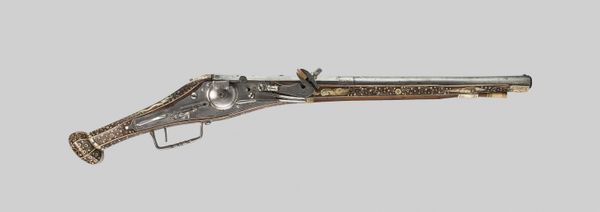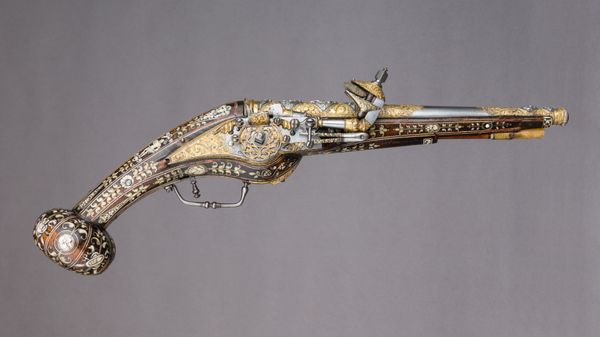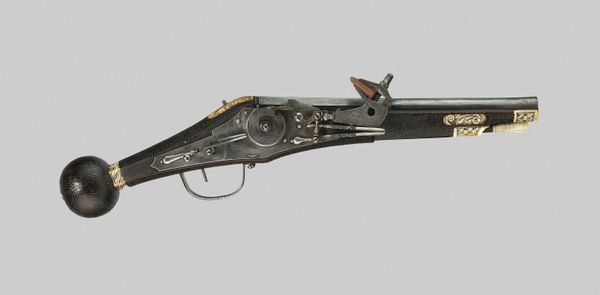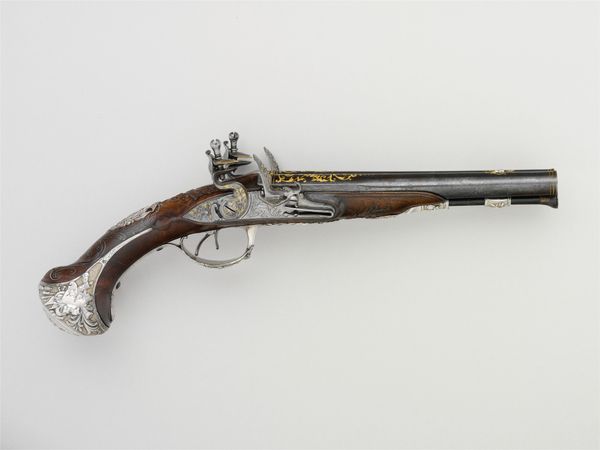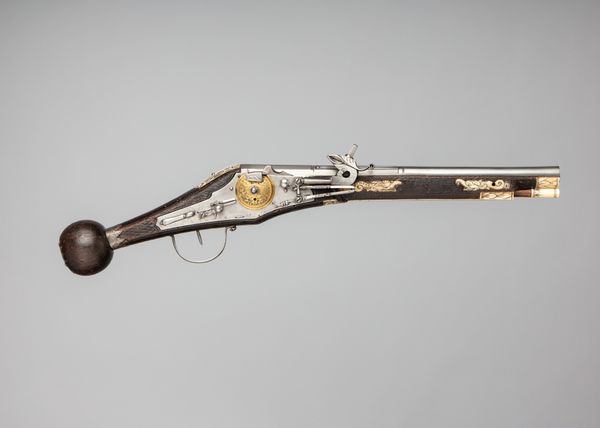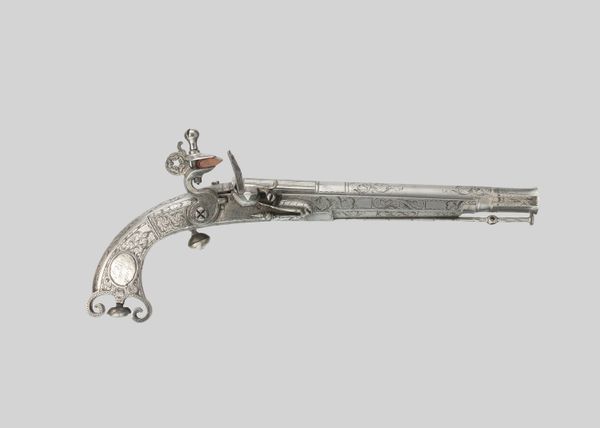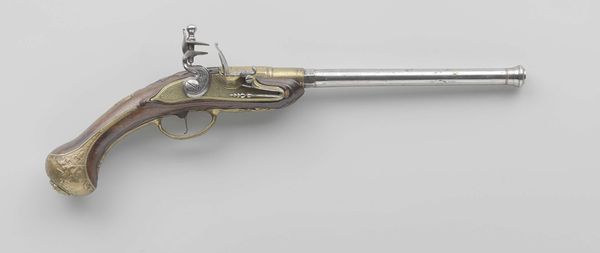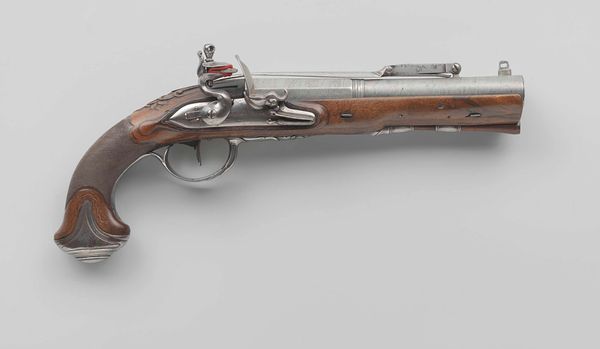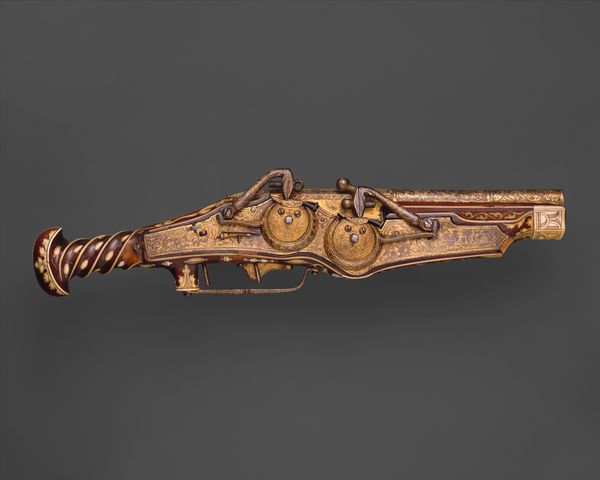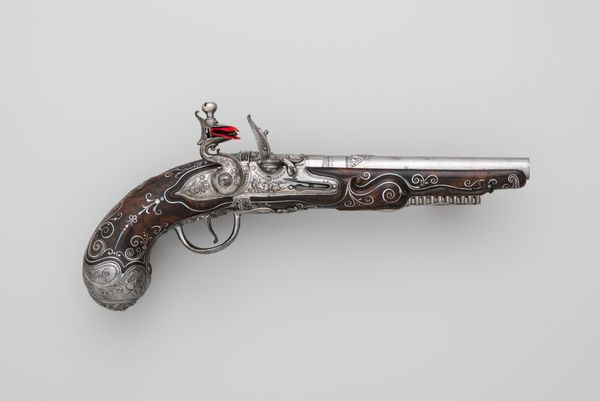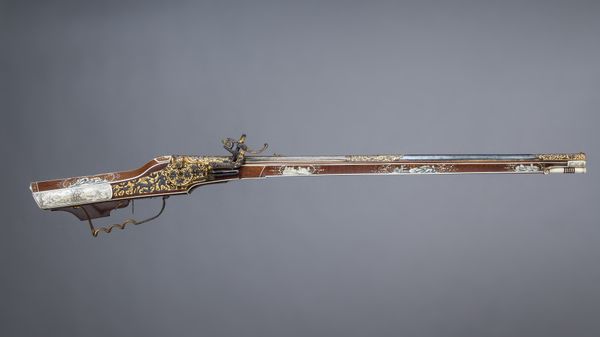
carving, metal, sculpture
#
medieval
#
carving
#
germany
#
metal
#
sculpture
#
sculpture
#
armor
#
decorative-art
Dimensions: L. 19 3/4 in. (50.2 cm); L. of barrel 12 in. (30.5 cm); Cal. .528 in. (13.4 mm); L. of lock 7 5/8 in. (19.4 cm); L. of plug 7 3/8 in. (18.7 cm); Wt. 3 lb. 14 oz. (1758 g)
Copyright: Public Domain
Editor: This is a German wheellock pistol, dating from around 1555 to 1605. It’s currently housed at the Metropolitan Museum of Art, and the materials include metal and carving. It strikes me as incredibly ornate for a weapon; the craftsmanship is really remarkable. What are your initial thoughts when you look at this piece? Curator: Well, firstly, it is critical to remember that objects such as these were not simply 'weapons.' The creation and ownership of such highly decorated arms reflected specific socio-political and cultural roles of their owners, as well as being luxury objects meant to signify status. Who do you imagine owned this, and how did they understand its value beyond simple utility? Editor: I imagine it belonged to someone wealthy, maybe nobility? The detail work must have cost a fortune. I suppose it represents power, too, and maybe even good taste? Curator: Precisely. Consider the cultural context of 16th and 17th century Europe. The right to bear arms, particularly these elaborate ones, was closely tied to social standing and political authority. The pistol becomes less a tool for violence and more a symbol legitimizing the power of the elite, and projecting the aesthetic values they felt reinforced their right to power. The artistry then, is deeply implicated in power structures of the period. What effect does knowing that have on how we understand its place in the museum today? Editor: It changes everything! I'd thought of it as a beautifully crafted object, but its function as a status symbol gives it a much darker, more complicated meaning. Its presence in the Met now feels almost like a historical warning about power. Curator: Exactly! It reminds us that museums don’t just display art; they also curate narratives about power, taste, and history itself. Editor: That’s fascinating. I’ll definitely look at other arms and armor exhibits differently now.
Comments
No comments
Be the first to comment and join the conversation on the ultimate creative platform.
